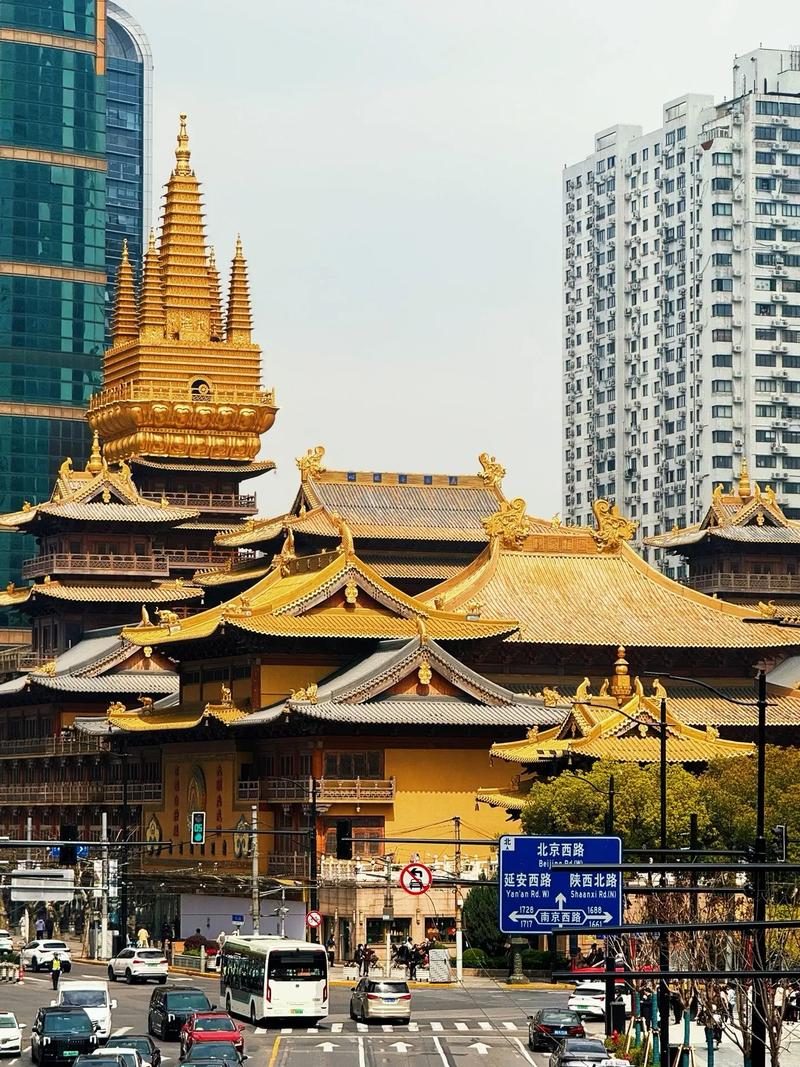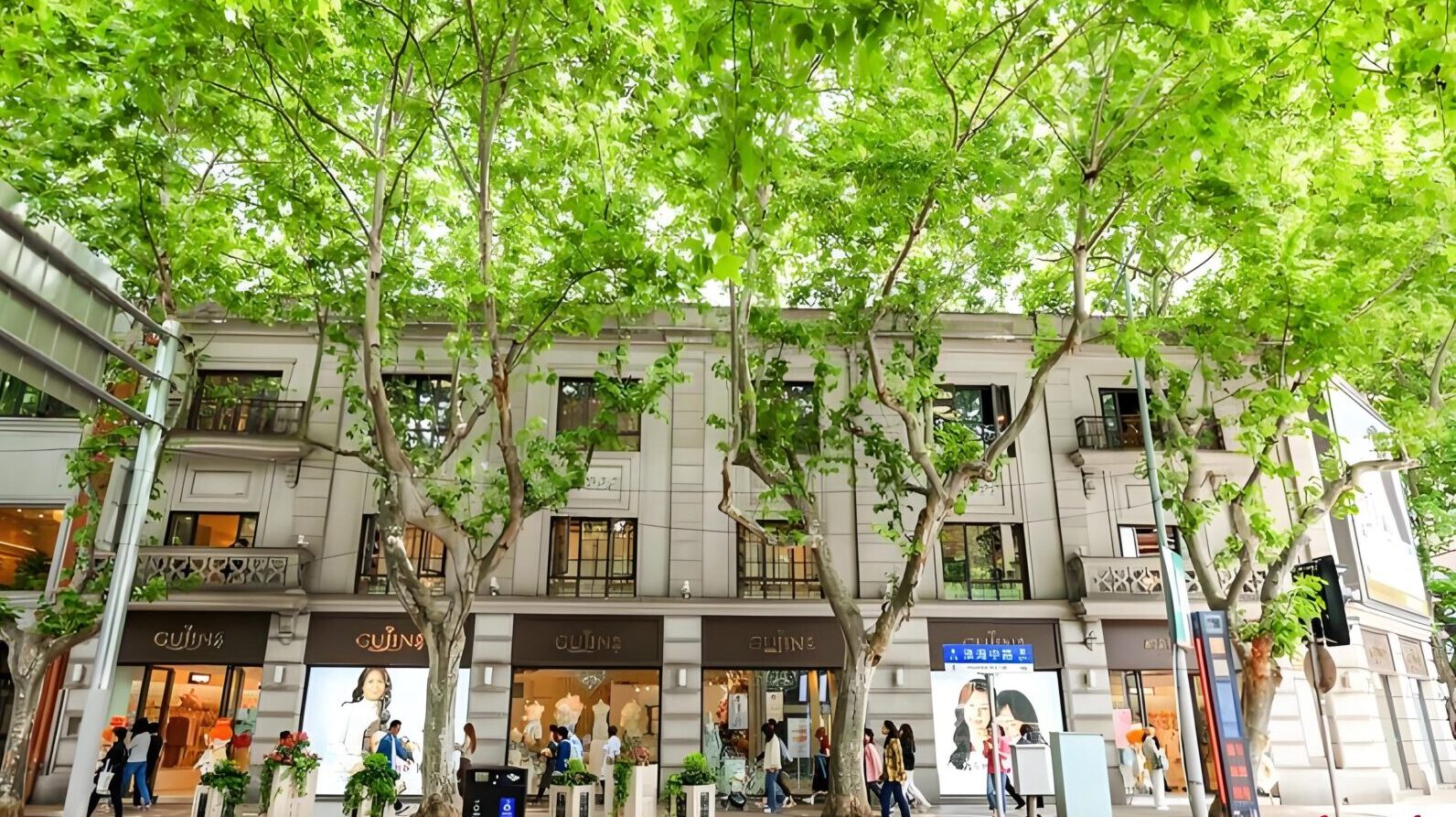When thinking about shanghai-what-to-do, most imagine its soaring skyline and futuristic towers. And yes, those views are stunning. But what makes Shanghai truly unforgettable is how those grand sights coexist with unexpected details—an old jazz bar tucked beneath neon lights, a stone lion crouching by a quiet alley, a century-old tea shop hidden behind a glass-fronted mall.
This is a city where past and future share the same streets. From the vertical ambition of Pudong to the shaded courtyards of the Old City, Shanghai blends spectacle with subtlety. In this guide, we’ve picked 20 must-see places that reveal the city’s full range—loud and quiet, modern and ancient, obvious and hidden.
What Are the Must-See Attractions Along the Bund?
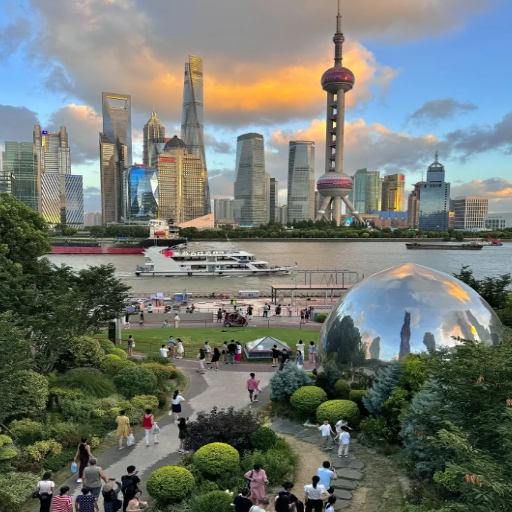
What Are the Must-See Attractions Along the Bund
The Bund is an energetic waterfront area that captures the heart of Shanghai’s blend of old and new. Other landmarks that should be checked out are the stunning art-deco and neoclassical structures along the promenade, illustrating various architectural styles from the city’s international concession period. While in the area, be sure not to miss the stunning Orient Pearl Tower and the Shanghai Tower, which sits opposite the Bund and give breathtaking views of the Pudong skyline. For a more profound cultural experience, explore the esplanade at night when dazzling light decorations are put up, or ride through the Bund Sightseeing Tunnel for a different type of underground experience.
Exploring the History and Beauty of the Bund
Step onto the promenade, and you’re instantly surrounded by history. Along this riverfront stretch, 52 historic buildings showcase a fusion of Gothic arches, Baroque flair, Art Deco edges, and touches of modernism. Most of them were built in the early 1900s, when Shanghai was cementing its place as a global trading powerhouse.
Among the standouts are the Customs House, with its towering clock imported from the UK (locals still affectionately call it Shanghai’s Big Ben), and the HSBC Building, known for its neoclassical façade and a series of eight mosaic ceilings that trace the story of East–West commerce. These aren’t just architectural relics—they’re physical reminders of Shanghai’s ambition, diversity, and openness to the world.
| Landmark | Year Built | Height | Style/Feature |
|---|---|---|---|
| Customs House Clock Tower | 1927 | 90 meters (295 feet) | Houses a UK-made clock mechanism; locals often call it Shanghai’s Big Ben. |
| HSBC Building | 1923 | — | Neoclassical design; inside are 8 detailed mosaics showing global trade history. |
| Shanghai Tower (seen across the river in Pudong) | 2015 | 632 meters (2,073 feet) | The second-tallest building in the world; offers a striking contrast to the Bund. |
Cultural and Aesthetic Experience
It’s not just about the buildings—it’s how the entire area makes you feel. During the day, carved lions, brass plaques, and arched windows reveal themselves in sharp detail under the sunlight. If you take your time, you’ll notice faded signage from old shipping companies or walkways that hint at a different century.
Once the sky darkens, everything shifts. Spotlights bathe the facades in warm amber hues, while across the river, the neon-drenched towers of Pudong flicker in pink, purple, and electric blue. The reflection off the water ties both worlds together in a single scene—one side rooted in history, the other charging into the future.
It’s this delicate balance that gives the area its energy. Whether you're here to take photos, understand the city’s layered past, or just walk and watch, there's something about the way old and new coexist that makes this place unforgettable.
Iconic Buildings to See at the Bund
To maximize the enjoyment of visiting the Bund, here are a few exceptional buildings I recommend that combine historical and modern breathtaking views:
- Peace Hotel (Heping Fandian)
You’ll recognize it instantly by the green, pyramid-shaped copper roof that rises above the skyline like a crown. Built in the 1920s, the Peace Hotel is a masterclass in Art Deco design—grand, symmetrical, and full of texture. Once known as the Cathay Hotel, it was the place to be for socialites and celebrities in old Shanghai. Step inside and you’ll find polished marble, stained-glass ceilings, and that unmistakable old-world scent of leather and time. But my favorite part? The Jazz Bar. It’s been running since the 1930s, and the live band—some of whom have played there for decades—makes you feel like time has stalled in the best way.
- Customs House
Just a few steps down from the Peace Hotel stands the Customs House, one of the Bund’s most commanding structures. Its 90-meter-high clock tower is impossible to miss, especially when it chimes on the hour—echoing across the river like a quiet reminder that the past is still keeping time. The design is neoclassical, clean and monumental, and the building once marked the heartbeat of Shanghai’s trading era. Even now, it gives off a kind of no-nonsense authority. It doesn’t try to be pretty—it just stands, solid and sure of itself.
- Bank of China Building
This one often gets overlooked, but it’s worth paying attention to. Completed in 1937, it was one of the first buildings in China to be designed with a mix of Western modernism and Chinese cultural motifs. Look closely and you’ll notice subtle carvings, tiered rooflines, and decorative corners that speak to both traditions. It’s a little more restrained than its neighbors, but in that quietness, it reflects Shanghai’s financial ambition in the early 20th century—bold, but measured.
All three of these landmarks offer more than architectural value. They reflect the confidence of a city that once saw itself as the "Paris of the East"—and, in many ways, still does. If you’re someone who notices details—a brass doorknob, a weathered emblem, a nameplate faded by time—this stretch of the Bund will reward your attention.
Best Time to Stroll Along the Bund
Timing can completely change your experience here. Early mornings between 6:00 and 8:00 a.m. are surprisingly peaceful—especially for a place that sees thousands of visitors every day. The air feels cooler, the lighting is soft and golden, and you’ll mostly be sharing the space with joggers, dog walkers, and older locals practicing tai chi. It’s one of the few times you can hear your own footsteps against the stone promenade.
Evenings, on the other hand, are a different kind of magic. Between 7:00 and 9:00 p.m., the city skyline comes alive. Spotlights cast warm glows on colonial facades, and the Pudong towers blink in neon colors across the river. It gets crowded, yes—but not in an overwhelming way. More like a collective hush, as everyone pauses to take in the view or lift their phone for the perfect shot.
Want to avoid the weekend rush? Go on a weekday evening in autumn (September to November). The air is crisp, temperatures hover between 15°C and 23°C (59°F–73°F), and the lighting conditions are ideal for both photos and strolls.
Here are a few quick tips to make the most of your visit:
Photography: Bring a tripod if you're into night shots—there’s minimal vibration, and the views are worth capturing properly.
Walking shoes: The promenade is over 1.5 kilometers long, and the stone paths can wear you out faster than you expect.
Tunnel experience: The Bund Sightseeing Tunnel is a bit quirky (light shows, sound effects), but if you’re traveling with kids or just want a surreal ride under the river, it’s worth the ¥50.
No matter when you come, take your time. The area isn’t meant to be rushed. Some views are better noticed when you’re not looking for them.
Want more night-time ideas? Here are 12 ways to enjoy Shanghai after dark.
How to Experience the Serenity of Yu Garden?
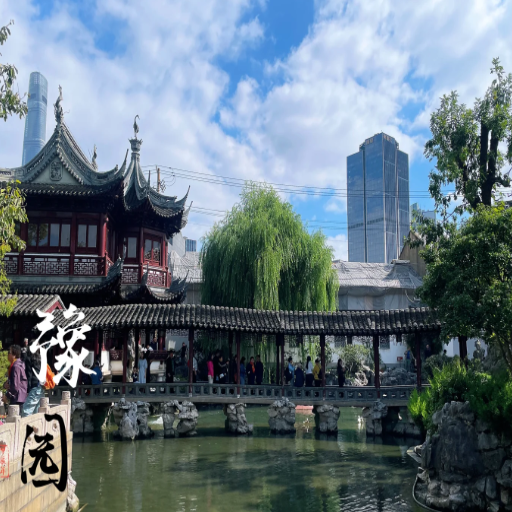
How to Experience the Serenity of Yu Garden
The best way to enjoy Yu Garden’s calm is to arrive early, ideally before the crowds. In the quiet hours, you can walk slowly through pavilions, cross stone bridges, and take in the sounds of water flowing past lotus ponds and rockeries. The peaceful setting makes every detail—curved rooftops, carved railings, shaded paths—stand out more vividly.
Before you leave, take a stroll through the nearby market just outside the gate. Though touristy, it offers a light contrast to the garden’s stillness and is a good spot to find souvenirs or sip tea as the city energy returns.
Curious about local culture? Read more about the City God Temple of Shanghai.
Exploring the Ming Dynasty Architecture of Yu Garden
Yu Garden is the Yu Family's garden, located in the city center. Its beauty captivates both international and local tourists. Built during the Ming Dynasty in 1559, Yu Garden is an exquisite example of the Ming Dynasty's architectural design because it illustrates the deep-rooted aesthetic qualities of unparalleled art and nature. The garden's layout plainly shows the balance of nature and construction. Pavilions, halls, and bridges surrounded by natural water points accentuate the bones.
The architecture of Yu Garden features a Ming dynasty building style that embodies grace and symmetry thanks to the use of gray, tiled roofs with upturned eaves. The wooden structures are embellished with mythical creature carvings and auspicious symbols representing unmatched prosperity and protection. Like pathways, the stonework is meticulously laid out to connect different garden regions, such as the Hall of Spring, the Great Rockery, and the Dragon Wall. The Great Rockery is a traditional eyecatcher of rockery sculpting art of the time; rising 12 meters above ground, it is also a centerpiece of the Yu Garden.
The Elements of Water philosophy was used in Yu Garden’s design to create ponds and streams meant to signify wealth, peace, and tranquility, following Chinese belief. Other structures embodying this concept include windows and doors with lattice-able designs that allow ventilation. The symbolic nature of the Ming Dynasty is so abstract and profound that it makes all the designs within the architecture completely harmonious, down to every last detail.
Want to step back in time? Explore our Shanghai History Museum Travel Guide.
What Makes Yu Garden a Must-Visit Attraction?
Yu Garden is one step ahead in the realism of Shanghai's preserved culture and stunning Yu Garden designs. Yu Garden is located in the core of Shanghai and is a typical garden erected during the Ming Dynasty, which gives an accurate approach to housing and landscaping during China’s woeful era of economics. Encompassing over five acres, it features ponds, lavish pavilions, and many other elements that must be meticulously placed together to form an eye-catching spectacle. These Frameworks include the world-famous Yuyuan Garden, a jade rock weighing over five tons and capturing the attention of many scientists worldwide due to its multiple geomorphological wonders. Works of the Gardens are one of their kind and fill visitors with peace from the crowded city of Shanghai. A key highlight is the jade rock Yuyuan Garden's lavish pavilions, accompanying the scenic stroll paths beautifully complimented with serene ponds lowing alongside. Quadrupling the staggering amount of captivating youth and relief, its beauty is also historically rich and pouring with inspirations to draw through to achieve the many unmet expectations yet to be succeeded. It is no surprise that tourists spend so long observing the garden and standing in awe, coming across the antique-like intricately crafted brake lattice windows or buildings resembling bridges carefully put over koi-filled pools.
What to Expect at the Iconic Shanghai Museum?
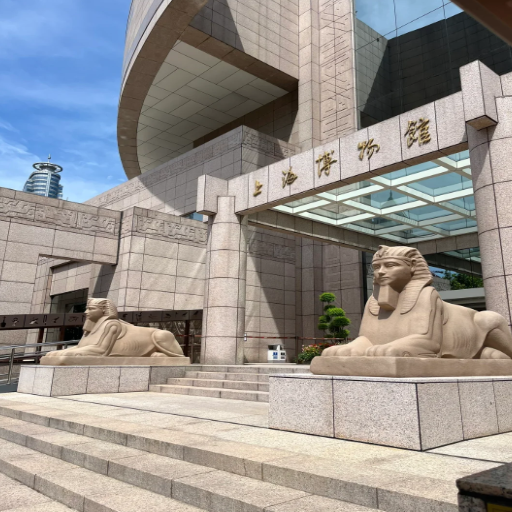
What to Expect at the Iconic Shanghai Museum
The Shanghai Museum offers a deep dive into Chinese history through art. With over 120,000 artifacts—ranging from jade and bronze to ceramics and calligraphy—it presents an impressive timeline of cultural evolution. The building itself, shaped like a traditional bronze ding, sets the tone for what’s inside: a blend of heritage, symbolism, and design.
Whether you're drawn to ancient tools or fine ink scrolls, there's something here for everyone. From Neolithic pottery to Qing Dynasty masterpieces, the collection captures the depth and diversity of Chinese civilization in a way few museums can.
Key Exhibits and Artifacts at the Shanghai Museum
- Bronze Gallery
The bronze collection is one of the museum’s highlights, with over 400 pieces from ancient China. You’ll see ceremonial wine vessels, ornate food containers, and weaponry that show both artistry and function. These artifacts reflect the sophistication of bronze casting during the Shang and Zhou dynasties.
What’s especially interesting is how each piece reveals something about daily life, religion, and social structure at the time. For example, some containers bear inscriptions that tell stories about their owners or the events they were used for.
- Jade Collection
This gallery showcases China’s long-standing admiration for jade. You’ll find delicate bi discs, cong tubes, and intricate pendants, many dating back to the Liangzhu culture. Each piece reveals both spiritual meaning and technical skill.
In addition, the exhibit highlights how jade changed over time—from ritual objects in early societies to status symbols in imperial courts. The craftsmanship, even in pieces over 3,000 years old, remains remarkably detailed.
- Calligraphy and Painting
Calligraphy and traditional painting are displayed side by side in this gallery, emphasizing the link between words and art in Chinese culture. You’ll see scrolls, albums, and fan-shaped paintings dating back to the Tang and Song dynasties.
Often, the brushwork itself tells a story—not just what’s written, but how it’s written. Styles vary dramatically, offering a glimpse into the personalities and philosophies of each artist.
- Ceramics Gallery
This collection spans over 8,000 years of Chinese ceramic history. It starts with simple Neolithic pots and ends with refined porcelain from the Ming and Qing dynasties.
Visitors can trace the evolution of glaze, form, and decoration over time. From Tang sancai figurines to blue-and-white porcelain, the changes reflect not just taste, but trade, culture, and innovation.
- Sculpture Gallery
Buddhist sculptures take center stage here, many carved from stone during the Northern and Southern Dynasties up to the Tang period. These works include standing Buddhas, carved stelae, and serene bodhisattva images.
What stands out is the shift in style over time—from early, simplified figures to later, more refined and emotional forms. The gallery helps show how religious art adapted to different cultural periods.
Understanding China's Rich History at the Museum
The museum experience is designed to be immersive. Modern lighting, clear labels, and interactive screens make it easier to understand even the oldest pieces.
Climate-controlled rooms protect delicate works, and thoughtful layout allows for a self-paced, quiet visit. Whether you're into art, history, or design, this place makes it easy to connect with China’s past in a meaningful way.
Discover themed journeys through gardens, temples, and old towns in Shanghai Cultural Routes.
Is the Oriental Pearl Tower Worth a Visit?
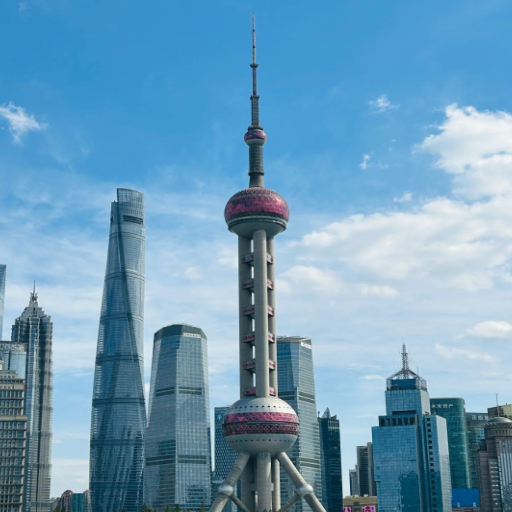
Is the Oriental Pearl Tower Worth a Visit
With its futuristic silhouette and distinctive pink spheres, the Oriental Pearl Tower is one of Shanghai’s most recognizable landmarks. Standing at 468 meters, it was once the tallest structure in China—and still dominates the skyline today.
But it’s more than just a photo spot. From glass-floor observation decks to a museum at its base, the tower offers a full experience that blends thrill, culture, and panoramic views. Whether you’re into architecture or just want a great view of the city, it’s absolutely worth a visit.
Experience the Thrill of the Observation Deck
The main draw of the Oriental Pearl Tower is, of course, the view. The primary observation deck sits at 259 meters, offering a 360-degree panorama of Shanghai. On clear days, you can see the Bund, the Huangpu River, and the sleek skyline of Pudong all at once.
For a more intense experience, step onto the glass-floor Skywalk, where the city is directly beneath your feet. It’s not for everyone—some visitors take a deep breath before even looking down—but it’s a moment that sticks with you.
Higher up, the Space Module at 351 meters provides another viewing area, along with the 263-meter outdoor platform, where you can feel the breeze and take unobstructed photos. Between the elevation, the engineering, and the views, the tower makes you feel like you’re hovering right above the heart of the city.
Dining and Entertainment at the Oriental Pearl Tower
Dining at the Oriental Pearl Tower isn’t just about the food—it’s about the view. The revolving restaurant, perched at 267 meters, completes a full rotation every 90 minutes, giving you a constantly changing skyline as you eat. The buffet includes both local and international dishes, making it a popular spot for visitors looking to take their time over a meal.
Beyond the restaurant, there’s more to explore. The Space Capsule at 351 meters offers a futuristic, enclosed viewing area, while the Shanghai Municipal History Museum at the base gives you a surprisingly immersive look at the city’s evolution. It’s a great way to pair sightseeing with some cultural depth.
Together, these features make the tower more than just a lookout point. Whether you're coming for the skyline, the meal, or the museum, it offers a complete experience that combines architecture, atmosphere, and a little bit of adventure.
Want the full lowdown? Here’s your complete guide to the Oriental Pearl Tower.
How to Enjoy the Vibrant French Concession?

How to Enjoy the Vibrant French Concession
To fully appreciate the French Concession’s charm, one has to walk through its tree-lined streets adorned with European-style buildings and boutiques. Popular locations like Tianzifang or Xintiandi feature artisanal shops, lively cafes, and restaurants. Make sure to visit Fuxing Park, where you can unwind in the peaceful atmosphere or observe locals practicing tai chi. If you want to experience culture at a deeper level, you can join guided walking tours that reveal astonishing secrets about the area’s colonial past. Whether shopping, eating, or just relaxing, French Concession will always have an unforgettable blend of history and modern vibrance prepared for you.
A Stroll Through the Historic French Concession
To witness the stunning charm of the historic French Concession, one must first put on comfortable shoes and be ready to hike for two to three hours. One should start at Xitiandi, known for its Shikumen architecture with cafes and shops. Secondly, one should walk around Tianzifang, which has narrow passages full of unique art studios, boutiques, and local restaurants with homemade servers and delicious authentic Chinese food.
One of the best options to unwind from your busy day is Fuxing Park, where you can stroll amidst scenic beauty, partake in tai-chi, or dance with locals. The park opens from 6 am to 8 pm. One last thing: you could also opt for a guided tour (which ranges from $20-$40) to help you appreciate the district’s colonial past and how it helped shape Shangahi’s culture. Remember to stay hydrated and carry your camera to photograph the stunning fusion of European and Chinese architecture.
Discover the Best Cafes and Boutiques in the French Concession
When I’m in the French Concession, Fuxing Park is a must-visit. My favorite coffee shop there is Cafe de Volcan, and I recommend trying out their fresh single-origin coffee. Their pour-over options are worth just $5-$8. WIYF is a more serene boutique café that specializes in exquisite hand-crafted ice cream and pairs it with freshly brewed coffee, making the cafe a perfect visit for any ice cream lover or coffee drinker under $10.
The best minute Chinese contemporary embroideries are on display at Madame Mao’s Dowry. A boutique was started by a student of Fang Chen, who later took the plunge to start her label rather than remain anonymous. These pieces start from $25, making them highly enticing. Dong Liang Studio further strengthens this district’s high-end reputation; many emerging Chinese fashion designers showcase their splendid euro-centric designs catered towards high-end consumers. With such great, unique pieces, their starting price of $100 is understandable.
Word of advice: If you want to avoid large crowds, consider going in the morning when you can enjoy the calm. You might also be able to score some remarkable deals.
Hidden & Forgotten: Abandoned Places That Still Whisper in Shanghai
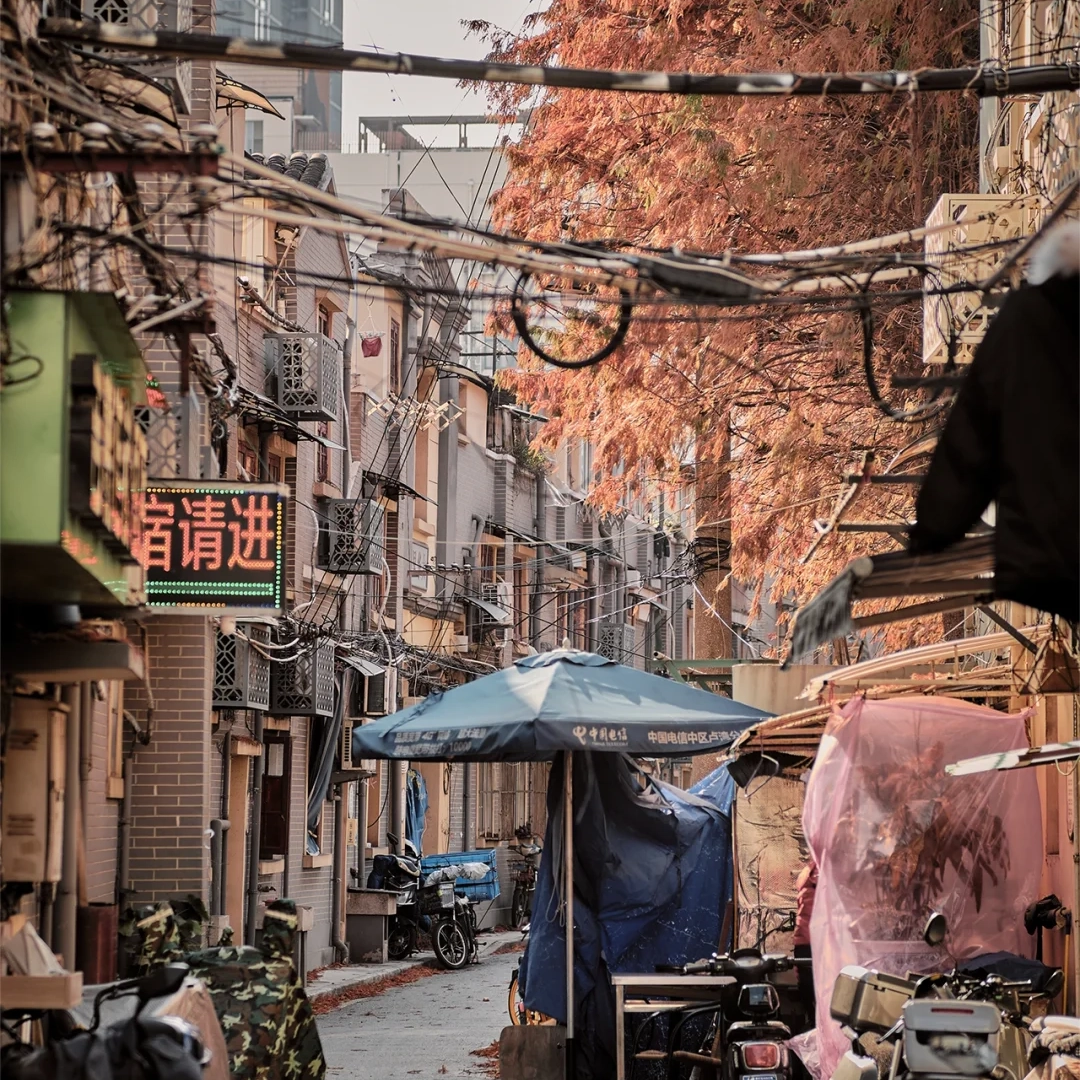
Laoximen Subdistrict in the Sunset
Longhua Martyrs Cemetery’s Quiet Side
At first glance, Longhua Martyrs Cemetery feels like a perfectly maintained memorial park. Wide paths, manicured lawns, and stone monuments mark Shanghai’s history of resistance. But walk past the main square and deeper into the southern edges, and the atmosphere shifts. Side trails become narrow, lined with overgrown shrubs and damp stone walls.
Here, you’ll stumble upon cracked stairways, rust-covered gates, and moss-laden pavilions—quiet relics of a darker, more solemn past. These neglected corners were once used for clandestine meetings during the 1930s and 1940s. Today, there are no signs or plaques here—only silence, and a strange stillness that makes you pause.
It’s not spooky, but it is powerful. If you’re the kind of traveler who notices what others overlook, Longhua’s quieter side rewards slow walking and sharp eyes. Just stay respectful—it’s still a place of mourning for many.
Shikumen Ghost Blocks in Laoximen
Shanghai’s iconic shikumen houses are often preserved in stylized areas like Xintiandi. But in Laoximen, you’ll find the real thing—raw, unrestored, and frozen in time. Entire blocks of historic homes stand vacant, their windows boarded, their balconies crumbling under the weight of time. Faded red banners hang over locked doors, whispering slogans from another era.
These ghost blocks aren’t open to the public, but they’re visible from nearby lanes. The silence around them is eerie, not because of ghosts, but because of memory—because people once lived, laughed, and cooked dinner here, and now it’s all still. Many locals pass by without a glance. But if you linger, you'll notice old enamel house numbers, dried-out potted plants, and doorways decorated with barely-visible Spring Festival couplets.
It’s urban decay with character. Photographers love the textures, and history lovers find these places oddly poetic. Just be careful—don’t cross fences or enter unstable buildings.
Fengjing’s Abandoned Textile Mills
Fengjing is a well-preserved water town southwest of Shanghai, known for peaceful canals and stone bridges. But if you venture a little off the tourist path, a stranger story unfolds. Several decades-old textile mills lie scattered at the town’s edge—hulking, half-collapsed structures slowly reclaimed by nature.
Inside the chain-link fences, you’ll spot rusting weaving machines, warped floorboards, and the remains of propaganda posters flaking off concrete walls. Local elders sometimes sit outside these ruins, playing cards or chatting under trees, as if nothing is unusual. For them, these ruins are familiar—part of a living, changing place.
While most travelers snap pictures at the town’s ancient stone archways, few realize that Fengjing also tells a quieter, more industrial tale. And that contrast—between beauty and abandonment—makes it a place worth exploring with both eyes open.
· Locations: Longhua Road, Laoximen, Fengjing outskirts
· Access: Free; some fenced areas should not be entered
· Recommended time: Early morning or late afternoon for better light and fewer people
· Metro/Buses: Accessible via Metro Line 1, Line 8, or regional buses
Why Nanjing Road is a Shopper's Paradise?
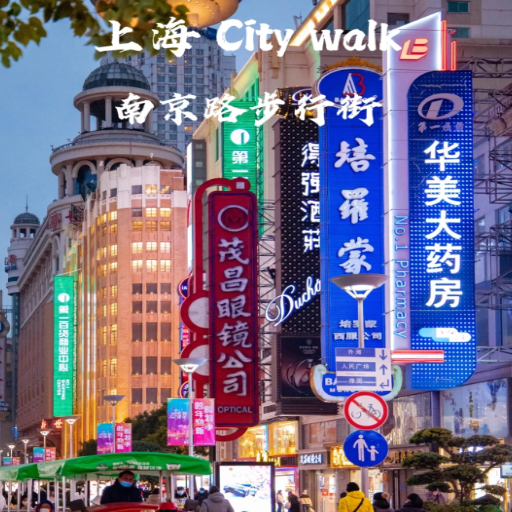
Why Nanjing Road is a Shopper's Paradise
Nanjing Road delivers a heady mix of luxury shopping and down-to-earth market finds—all packed into one of Shanghai’s most iconic streets. Spanning nearly three miles, it stretches from the historic Bund all the way to the inner city, weaving together flagship stores, classic department stores, and tucked-away boutiques. What makes it so compelling is the contrast: sleek, glassy malls stand side by side with traditional shops that have been here for generations.
But it’s not just about shopping. The street pulses with culture—bright food stalls, street performers, neon lights, and the occasional glimpse of old Shanghai architecture hidden behind the modern façade. It’s this combination of commerce, history, and energy that makes Nanjing Road a must-see for anyone visiting Shanghai, whether you’re here for the brands or just to soak up the city’s rhythm.
Top Shops and Souvenir Spots on Nanjing Road
- Shanghai No.1 Department Store
As the name suggests, this place has long been a heavyweight in Shanghai’s shopping scene. Beyond big-brand fashion, it’s known for offering a wide range of traditional Chinese goods—think silk scarves, elegant tea sets, and qipao with intricate embroidery. It’s a go-to spot if you’re looking for souvenirs with local flavor but don’t want to hunt through side streets to find them.
- Huaihai Fang Handicrafts Boutique
Tucked away just off the main road, this boutique is a treasure trove for anyone into Chinese arts and crafts. From calligraphy brushes to small stone sculptures, everything here feels handcrafted and thoughtfully curated. I once spent nearly half an hour here deciding between two paper-cut scrolls—and still left wishing I had bought both.
- Shanghai Book City
Calling all book lovers—this place is more than a bookstore; it’s a cultural deep dive. You'll find a rich collection of books on Chinese art, architecture, and history, many with English translations. It's also a peaceful retreat from the buzz outside, whether you're picking up a gift or just want a quiet place to browse.
- Jiuguang Department Store
For something a little more upscale, Jiuguang offers high-end cosmetics, luxury fashion labels, and beautifully packaged food products that double as great gifts. The mall itself is bright, polished, and designed for leisurely browsing. Prices are higher, but the quality and presentation speak for themselves.
- Food Souvenirs Stalls
Scattered all along Nanjing Road, these stalls might not look fancy, but they deliver on flavor. Expect sweet mooncakes, savory duck neck, and crispy sesame snacks, all wrapped in neat little boxes. These treats are great for taking home—or, honestly, snacking on while you walk.
Dining and Street Food Experiences on Nanjing Road
Defined by its street and high-end food offerings, Nanjing Road never falls short of meeting the nutritional needs of any traveler. There is no shortage, whether it is any food type, from Shanghainese dishes to Italian cuisines. Some highlights are:
- Sit-Down Restaurants
Like all streets, Nanjing Road is famous for its high and mid-tier restaurants. Their menu includes Shanghainese specialties such as xiaolongbao (soup dumplings), braised pork belly, and crab dishes. Renowned restaurants like Crystal Jade and Shanghai First Foodhall serve local specialties in an exquisite environment. A meal in these restaurants costs from ¥50 to ¥150 per person, depending on the restaurant.
- Street Food Stalls
Side streets and back alleys off Nanjing Road sell street food for a more authentic atmosphere. These stalls capture the spirit of Shanghai’s street food scene by providing aiyo scallion pancakes, egg tarts, and shish kebab for lamb. These food items usually cost between ¥5 and ¥20, making it easy for the average local or tourist to enjoy these delights.
- Cafés and Dessert Shops
Nanjing Road features contemporary dessert cafes and bakeries catering to those with a sweet tooth. From bite-sized delicacies like tiramisu and Japanese crepe cakes to baked mooncakes, there's something to satisfy every sweet lover’s craving. These enticing treats are perfect for crowning any meal. Artisan dessert spots and well-known dessert chains such as Starbucks can be found easily, with the price for coffee and desserts ranging from ¥30 to ¥80.
Aspects for Planning Your Visit
- Peak Hours: Street food gets busier from 6 to 9 p.m. If you're looking for calm, visiting during the early afternoon may be preferable.
- Payment Options: Most restaurants and stalls accept cash; however, mobile payment systems like Alipay and WeChat Pay work beautifully for those preferring convenience.
- Accessibility: Nanjing Road is very pedestrian-friendly, with abundant rest areas and directional signs for visitors. Most major restaurants and shopping centers are wheelchair accessible.
- Hygiene Standards: To ensure food safety and sanitization, restaurant and stall operators in Shanghai display cleanliness grades. Eateries marked ‘A’ or ‘B’ are the best choice for peace of mind.
Nanjing Road caters to all food enthusiasts, from luxury clients to street food fans. With every bite, you can experience Shanghai's culture and history.
Craving more? Check out our full Shanghai food guide—eat like a local in 2025.
Nightlife and Entertainment on Nanjing Road
As the sun sets, Nanjing Road doesn’t slow down—it just changes character. Neon lights flicker on, store signs glow in every color imaginable, and the crowds shift from daytime shoppers to night-time wanderers. The western section becomes noticeably livelier, with upscale lounges, stylish bars, and live music venues opening their doors. For those looking for a more laid-back night, themed cafés and boutique cinemas are scattered throughout the area, especially near the People’s Square.
If you’re traveling with family or prefer something low-key, the eastern end of Nanjing Road offers a different kind of energy. Light displays, street performers, and evening markets make it easy to stroll and take in the atmosphere without diving into the bar scene. And thanks to the many pedestrian-only zones, you can walk freely and safely, even during peak hours.
Most entertainment spots wind down between 11 p.m. and 2 a.m., but the energy here tends to linger. Whether you're sipping a cocktail, enjoying a rooftop view, or just watching the lights bounce off the pavement, Nanjing Road after dark is one of the best ways to feel Shanghai’s pulse.
Slow Living in Shanghai: Where Luxury Meets Everyday Beauty
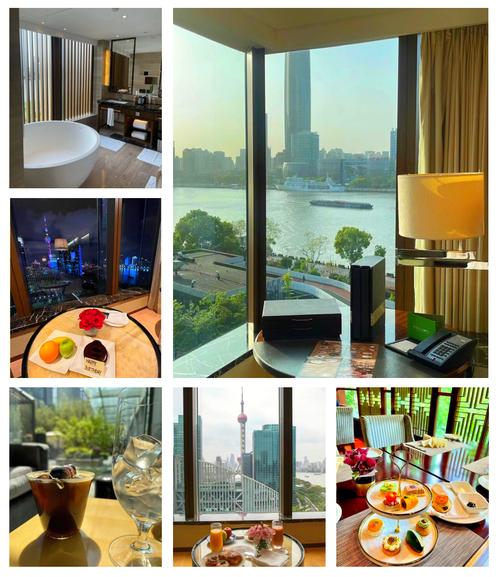
The Mandarin Oriental Pudong
Discover the City One Five-Star Stay at a Time
Luxury in Shanghai is not just about the views—it’s about the pace. The city’s finest hotels aren’t just places to sleep; they’re sanctuaries designed to help you slow down and savor. Whether you’re watching the skyline from a marble soaking tub or sipping jasmine tea in a private garden courtyard, the best stays in Shanghai are crafted for comfort and cultural immersion.
At The Middle House, understated elegance meets wellness-focused design. You’ll find contemporary Chinese décor, Diptyque amenities, in-room yoga kits, and a serene indoor pool that feels more like a spa than a hotel feature. Meanwhile, Amanyangyun—a serene retreat just outside the city—offers antique villa suites relocated from Jiangxi, complete with forest surrounds, meditation spaces, and calligraphy classes on-site. This is where luxury becomes soulful.
Curated Experiences That Redefine Indulgence
High-end stays in Shanghai come with bespoke services that make slow travel a pleasure. At The Peninsula Shanghai, guests are chauffeured in Rolls-Royces, enjoy rooftop afternoon teas overlooking the Bund, and can book private museum viewings or dumpling-making classes through the hotel concierge.
Looking for quiet indulgence? The Mandarin Oriental Pudong offers riverside suites with butler service, an award-winning spa featuring traditional Chinese therapies, and a whisky bar with rare single malts from Japan and Scotland. Time slows here—in all the right ways.
Local Rhythms, Global Standards
What sets Shanghai apart is its ability to blend East and West. Five-star hotels here understand that. Many offer tai chi in private courtyards at dawn, followed by chef-led market tours or silk robe-fitting sessions in-room. Luxury is expressed not just through material, but through intention.
If you're the kind of traveler who finds joy in thoughtful service and hidden cultural depth, Shanghai rewards you tenfold. And the best part? You never have to rush.
References
Frequently Asked Questions (FAQ)
Q: What are the must-see attractions in Shanghai for a first-time visitor?
A: A first-time visit to Shanghai should include top attractions like the Bund, which offers iconic skyline views, the historic Yuyuan Garden, and the modern marvels of the Shanghai Tower and the Shanghai World Financial Center.
Q: What is the best time to visit Shanghai to enjoy its attractions?
A: The best times to visit Shanghai are spring (March to May) and autumn (September to November), when the weather is pleasant. These are ideal times to explore both outdoor and indoor attractions.
Q: Are there any historical places to visit in Shanghai that showcase old Shanghai?
A: Yes, you can explore historical areas like the French Concession, which offers a glimpse into old Shanghai with its tree-lined avenues and colonial architecture, and the ancient water town of Zhujiajiao near Shanghai.
Q: Where can I experience the best views of Shanghai's skyline?
A: For breathtaking skyline views, visit the observation decks of the Shanghai Tower and the Shanghai World Financial Center in Pudong.
Q: What family-friendly attractions are available in Shanghai?
A: Families can enjoy a day at Shanghai Disneyland or visit Shanghai Circus World for an exciting acrobatic show. The Shanghai Ocean Aquarium is another popular attraction for families.
Q: How can I explore the cultural side of Shanghai?
A: To explore Shanghai's culture, visit the Shanghai Urban Planning Exhibition Center and the Shanghai Jewish Refugees Museum. These places provide insights into the city's urban development and historical narratives.
Q: What are some recommended places to eat in Shanghai?
A: Downtown Shanghai offers a variety of dining options, including traditional Shanghainese cuisine, in places like Din Tai Fung and Jia Tang Bao. For a high-end experience, try the restaurants in the Bund area.
Q: Are there any scenic areas or parks in Shanghai worth visiting?
A: The Huangpu River promenade offers scenic views and is an excellent place for a leisurely walk. Century Park is the largest park in Shanghai, perfect for outdoor activities and relaxation.
Q: What are some of the best things to do around Shanghai?
A: Around Shanghai, you can take a day trip to the ancient water town of Suzhou, known for its classical gardens, or visit Hangzhou, famous for its picturesque West Lake.
Q: How can I conveniently travel around Shanghai?
A: The Shanghai Metro is the most convenient way to travel around the city. Its extensive network connects most attractions and areas of Shanghai. The Shanghai Maglev is also a quick way to reach Pudong International Airport.
Want more China travel ideas? Check out our city guides on Beijing, Shanghai, Guangzhou, and Chengdu.

